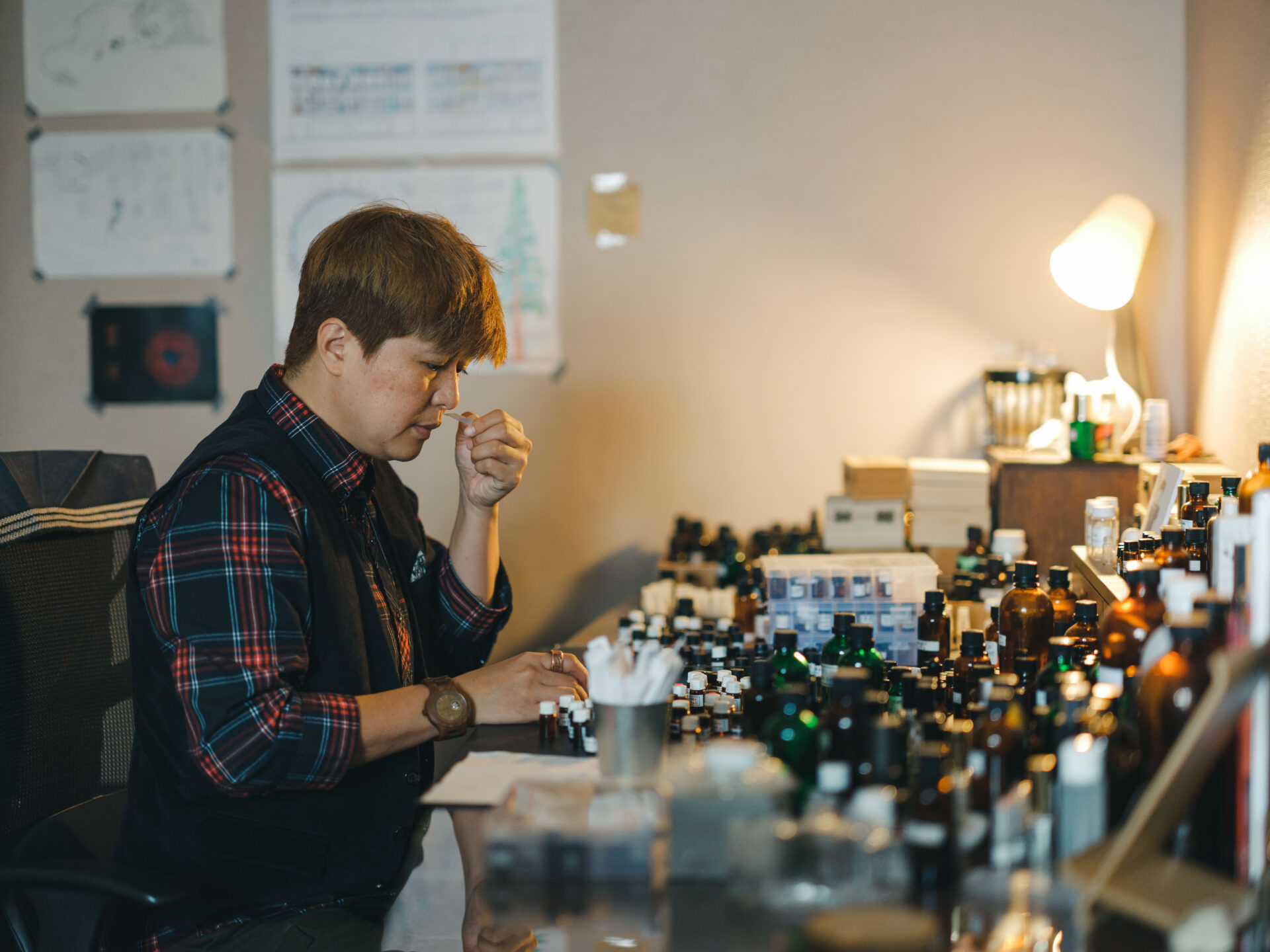“For us, tea time is a moment to stop what we are doing, calm our minds and reflect inwardly.”
Pan is a tea master and perfumer who founded the Taiwanese tea perfume brand P.Seven. 2022 marks the 10-year anniversary for the brand company, and they released a new series of tea perfumes called Feng Cha for the first time in seven years.
Of these perfumes, the Aged Tea won the Grand Prix award at the Art and Olfaction Awards’ independent category in 2022. This award is considered to be the most prestigious olfactory art award in the perfume industry and their recognition has helped to promote Tawainese tea perfume to the world.
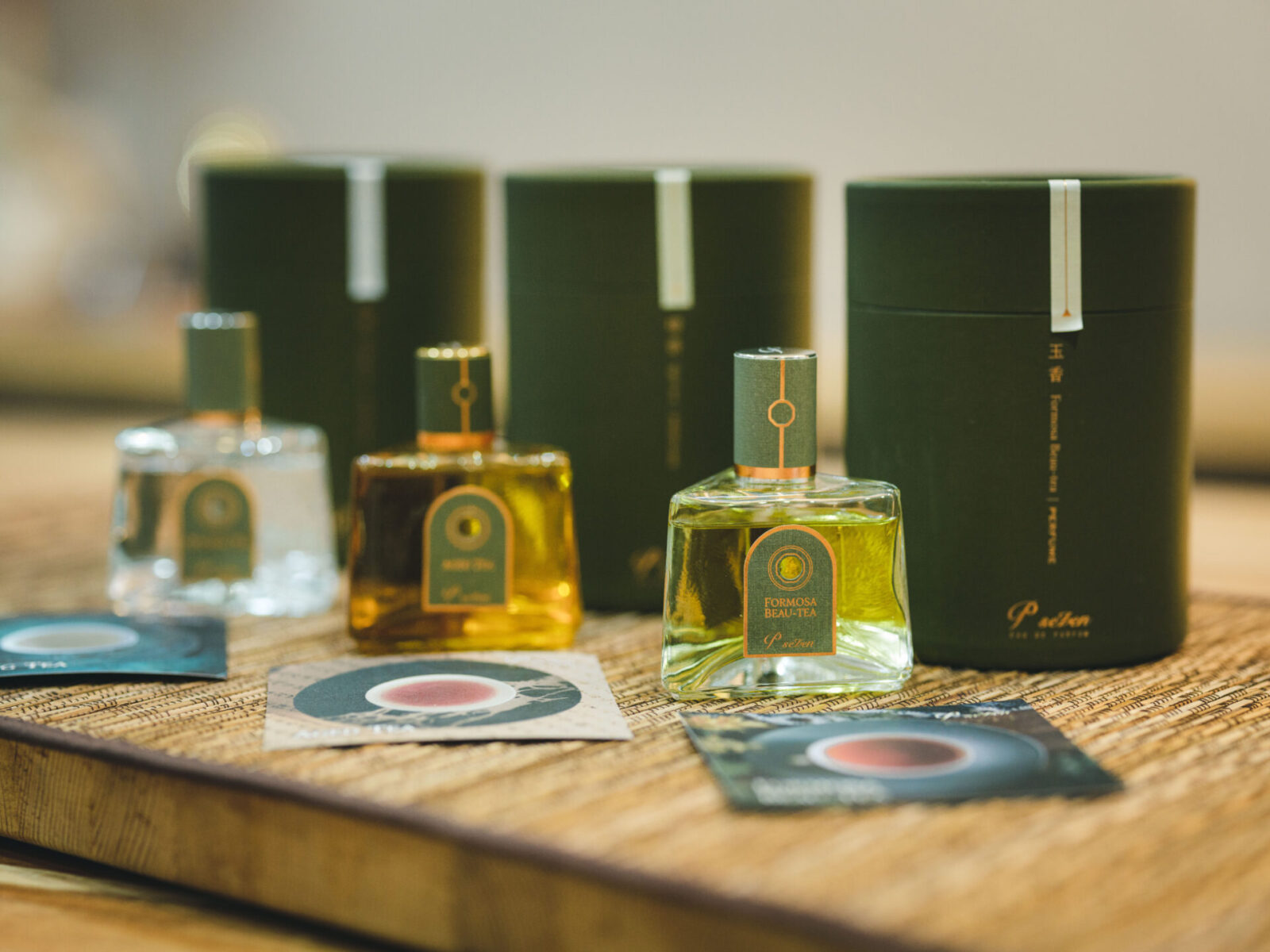
Besides the P. Seven brand company, Pan has produced numerous other original fragrances, such as theTaiwan Taoyuan International Airport original fragrance, BREATH TAIWAN for Starlux Airlines. We spoke with Pan about Tawainese tea and the philosophies behind her creations of various fragrances.
The journey of a Taiwanese tea master becoming a perfumer
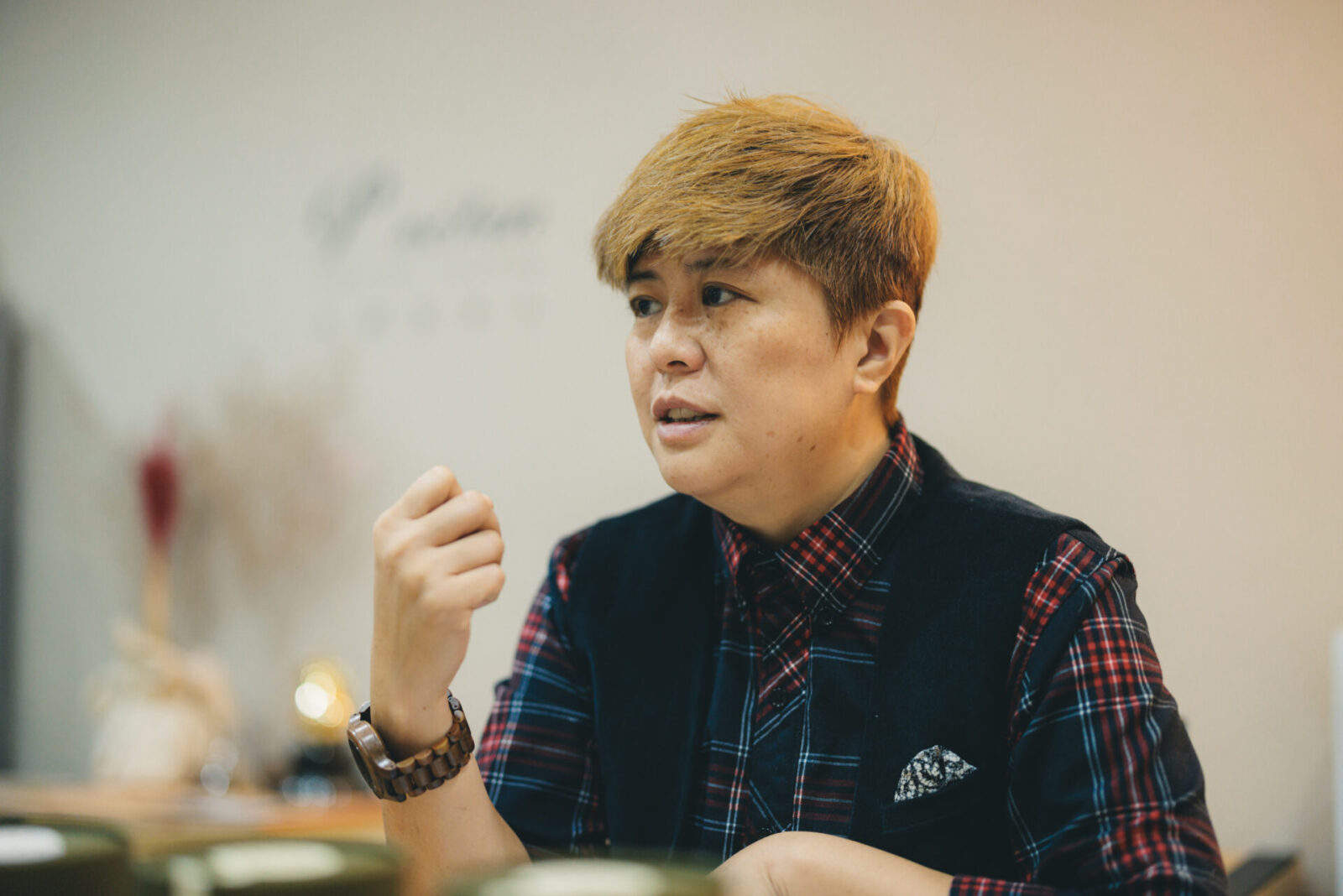
“I drink tea everyday, so when some days go by where I am too busy to drink tea, I begin to feel like I am not properly taking care of myself.”
We first met Pan over a year ago when she told us about how she was so busy that she was not able to enjoy her daily Taiwanese tea routine. Lately, however, she says that she is able to make time to enjoy tea at least twice a day.
Pan worked as a tea master at the salon of the Grand Hotel Taipei for five years. During this time, she developed a desire to express the fragrance of Taiwanese tea through perfumes which led her to starting the Taiwanese tea perfume brand P.Seven.
“The world is filled with black tea and green tea perfumes, but I wanted to express the attraction of Taiwanese tea which has multiple layers of fragrances that change through the experience.” Pan is dedicated to embodying Taiwanese tea culture through perfume.

P.Seven’s Taiwanese tea perfumes quickly garnered attention and they began sales in Japan. It has been steadily winning the hearts of consumers ever since.
Their signature fragrance is called “Ming and is made from kinsen tea, which features a milky aroma. Other perfumes include ingredients that are unique to Taiwan, such as maqaw, betel nut, rice wine, and herbal medicine, and all are growing in popularity.
Surprisingly, their perfume brand did not release any other Tawainese tea perfumes besides the kinsen tea for a long time.
In 2022, they released Feng Cha, their first new tea perfume series in seven years. Feng Cha refers to a traditional Taiwanese custom of offering tea to people passing by.
“Although it is a little different from the traditional style of Feng Cha, Taiwanese people still serve tea to visitors in their homes and offices. This tradition has adapted to modern lifestyles and is still a part of everyday life. I created this Feng Cha series with the same care that I put in making tea for my guests.”

What sets Asian tea apart from that of Europe and North America
Why didn’t Pan release a new Taiwanese tea perfume for seven years?
“The truth is that it is very difficult to express Taiwanese tea in one fragrance.”
“Fragrance and aroma are the most important aspects of tea. From white tea, green tea, to black tea, there are many tea-based perfumes in the world, but many of them have a flower-like aroma. I think this is especially true for perfumes in Europe and the United States.”
Pan says that there is a big difference between the tea culture in Europe and the United States and that of Taiwan.
“In the West, tea time is enjoyed by spending time with friends and family. It is a time to chat and have fun. In Taiwan, tea time is taking a moment to stop what we are doing, calm our minds and take time to reflect inwardly.”
Pan asks, “Isn’t the same true in Japan?”
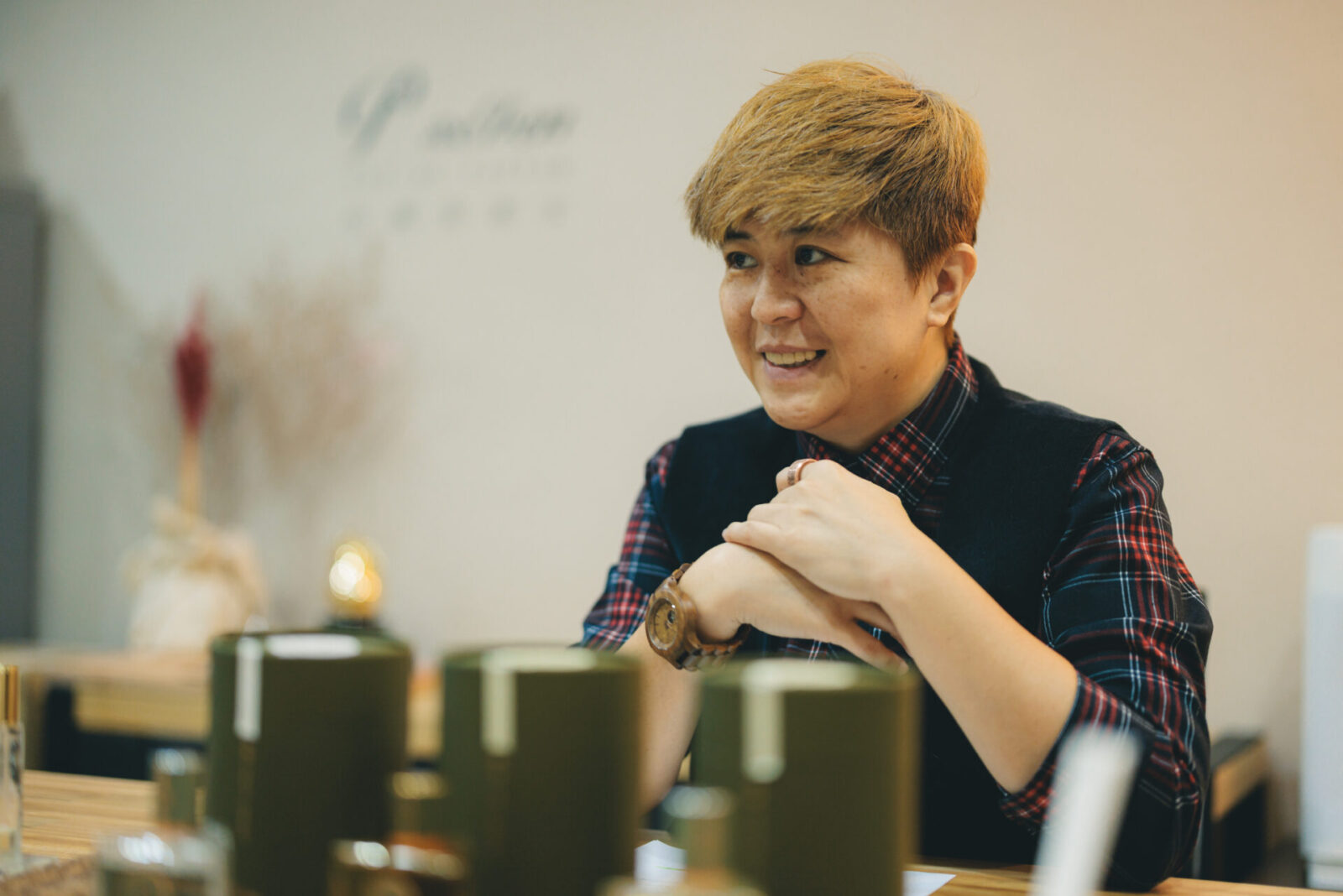
“The difference between Japanese tea and Taiwanese tea is that Japan puts emphasis on the freshness of tea leaves, while in Taiwan the emphasis is put on the craftsmanship of processing the tea after it is picked, such as in roasting and fermentation. I think this is why the way we interpret the fragrance of tea is different in Asia compared to the West.”
The Feng Cha series includes three perfumes and Pan says that they succeeded in “perfectly expressing the oriental charm of Taiwanese tea.”
Among the three perfumes, the Aged Tea, which won the Grand Prix award for the independent category of the Art and Olfaction Awards (A+OA) 2022, is an expression of Lao Cha which is a tea that is fermented and aged for twenty to thirty years and is a tea that Pan has personally enjoyed drinking for a long time.
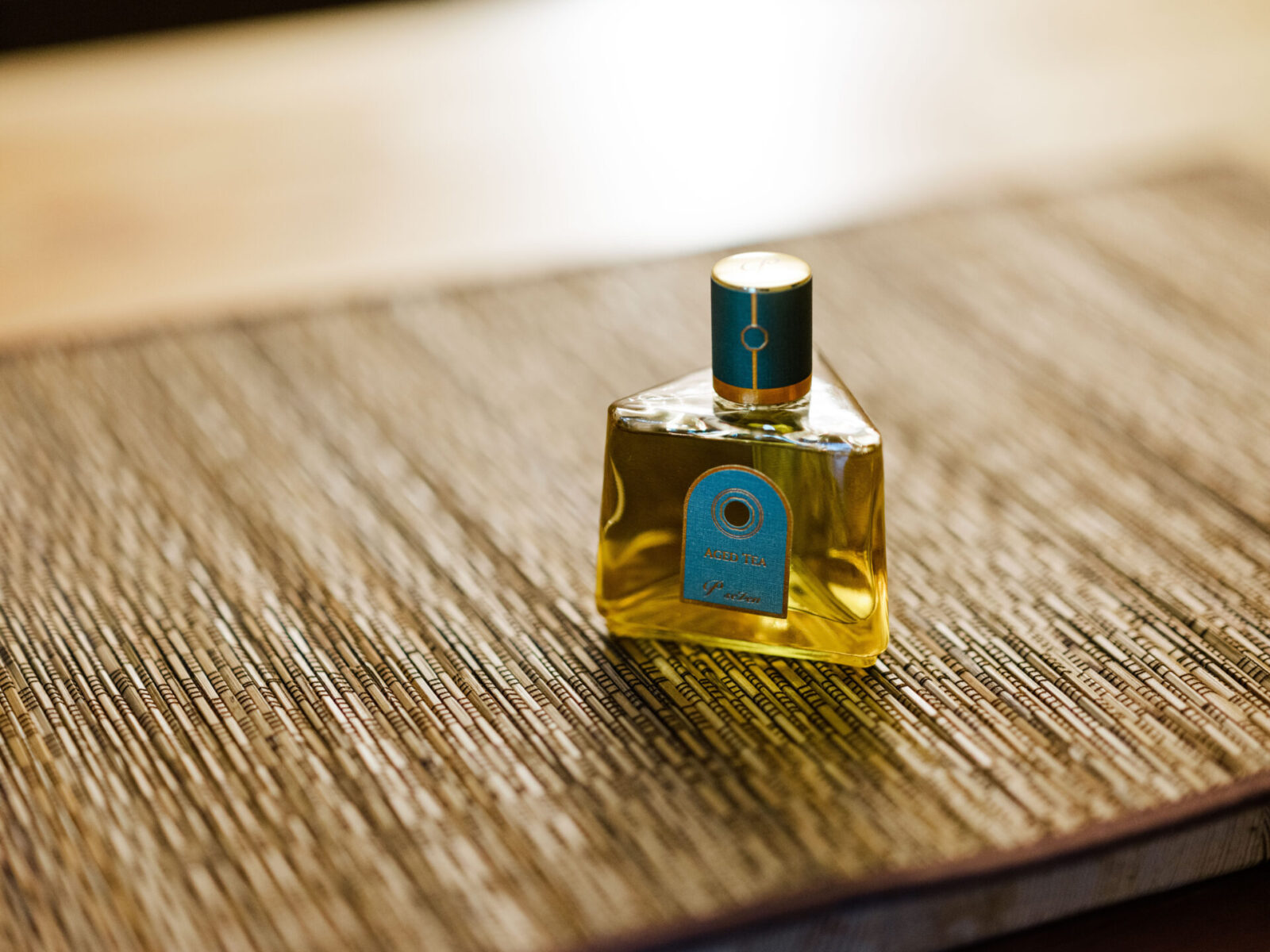
Even among Taiwanese teas, Lao Cha takes many years to develop its deep flavor and aroma. How did Pan feel when the perfume made from this tea won the Grand Prix award?
“What I appreciated about this competition was that the panel made judgments without being informed about the brand names of the perfumes.”
“We were competing against brands from companies around the world with a long history of making perfumes, such as companies from Switzerland, Italy, and France. I believe that we were able to achieve our results because the judges had never experienced a perfume like ours before. I think our perfume made them wonder, ‘What is this fragrance made of?’ Looking at the comments from the judges, many of them included such questions. I believe we were able to give them an oriental fragrance experience.”
How does a perfumer express whisky or rose in a fragrance?
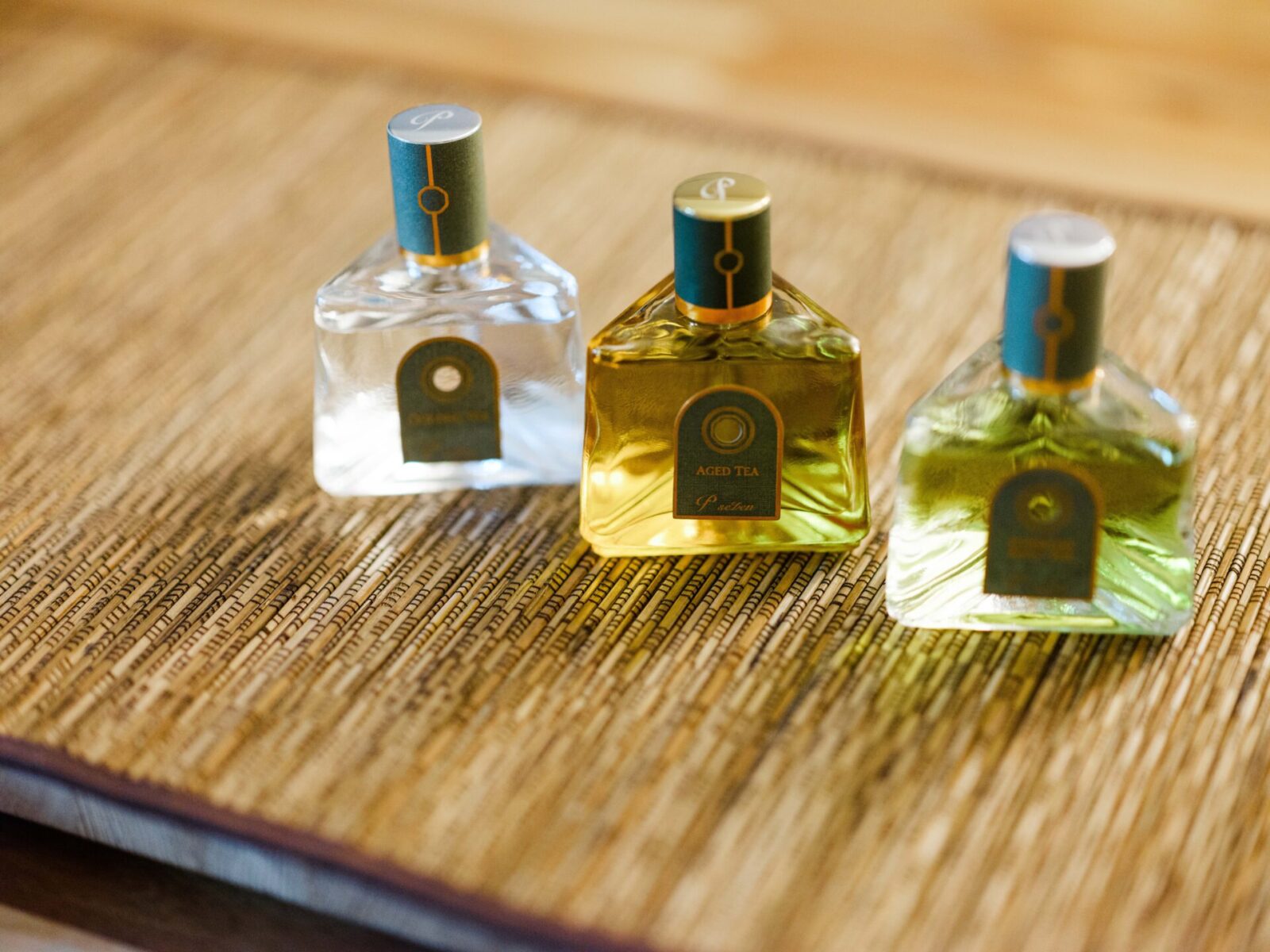
The Oolong Tea perfume has a refreshing aroma, like the fresh air of a tea plantation during early morning tea picking time.
The Aged Tea perfume has the richness of the old teas that have been aged over several decades of time.
The Formosa Beau-Tea perfume has the aroma of Dongfang Meiren tea, which has a roasted black tea like flavor.
The Feng Cha series accurately sublimates the oriental experience of Taiwanese tea into a perfume. How does Pan design these fragrances? We asked her about the philosophies behind her creations.
She answered, “I think that designing fragrances is very much like drawing a picture.”
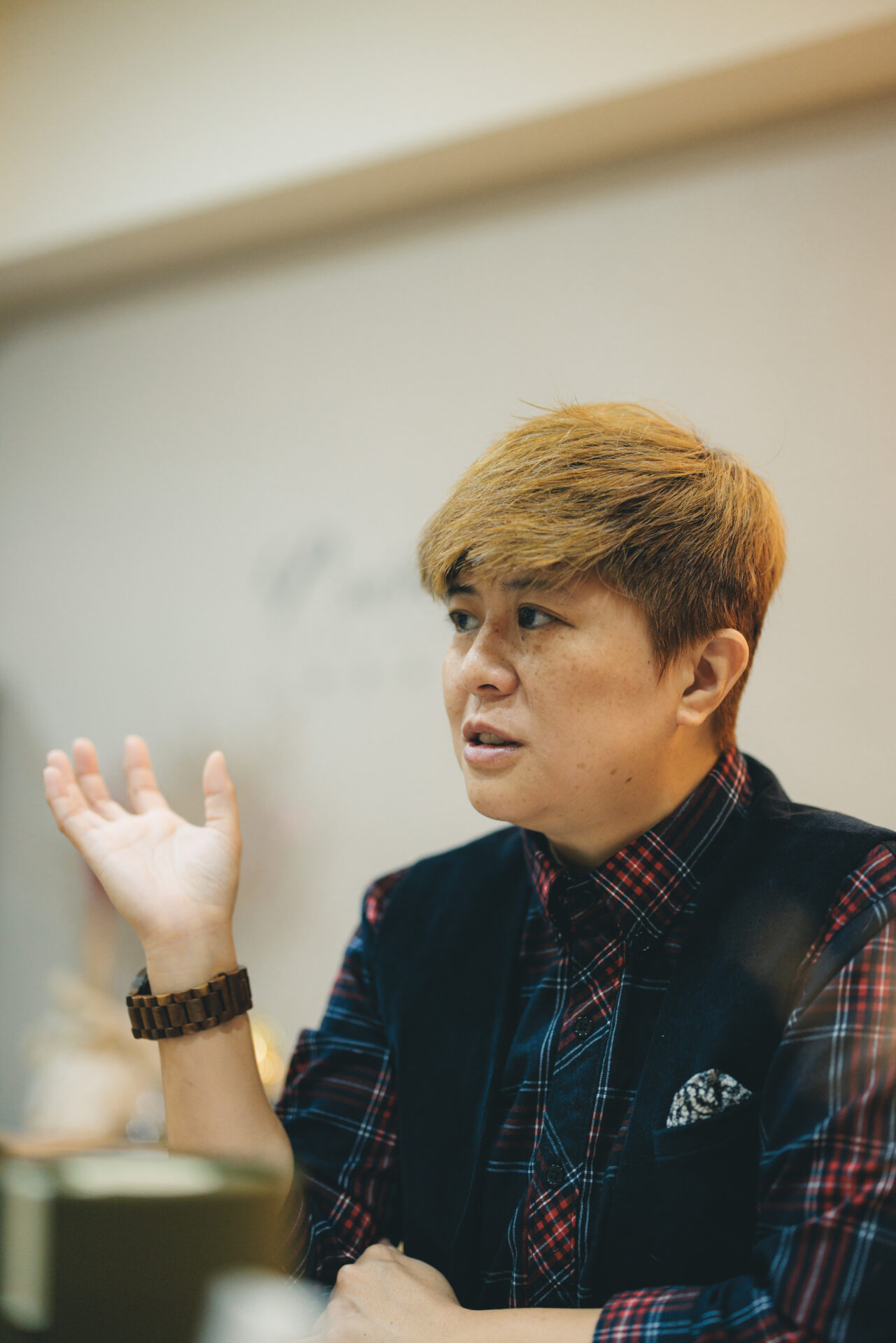
“I mentioned earlier that the aroma of tea is difficult to express in one fragrance. The absolute (the concentrated aromatic substances extracted from raw materials) that can be extracted from tea is very limited and dissipates very quickly after extraction. The challenge is how we can retain that aroma. I always combine fragrances from other ingredients in order to recreate the aroma of tea.”
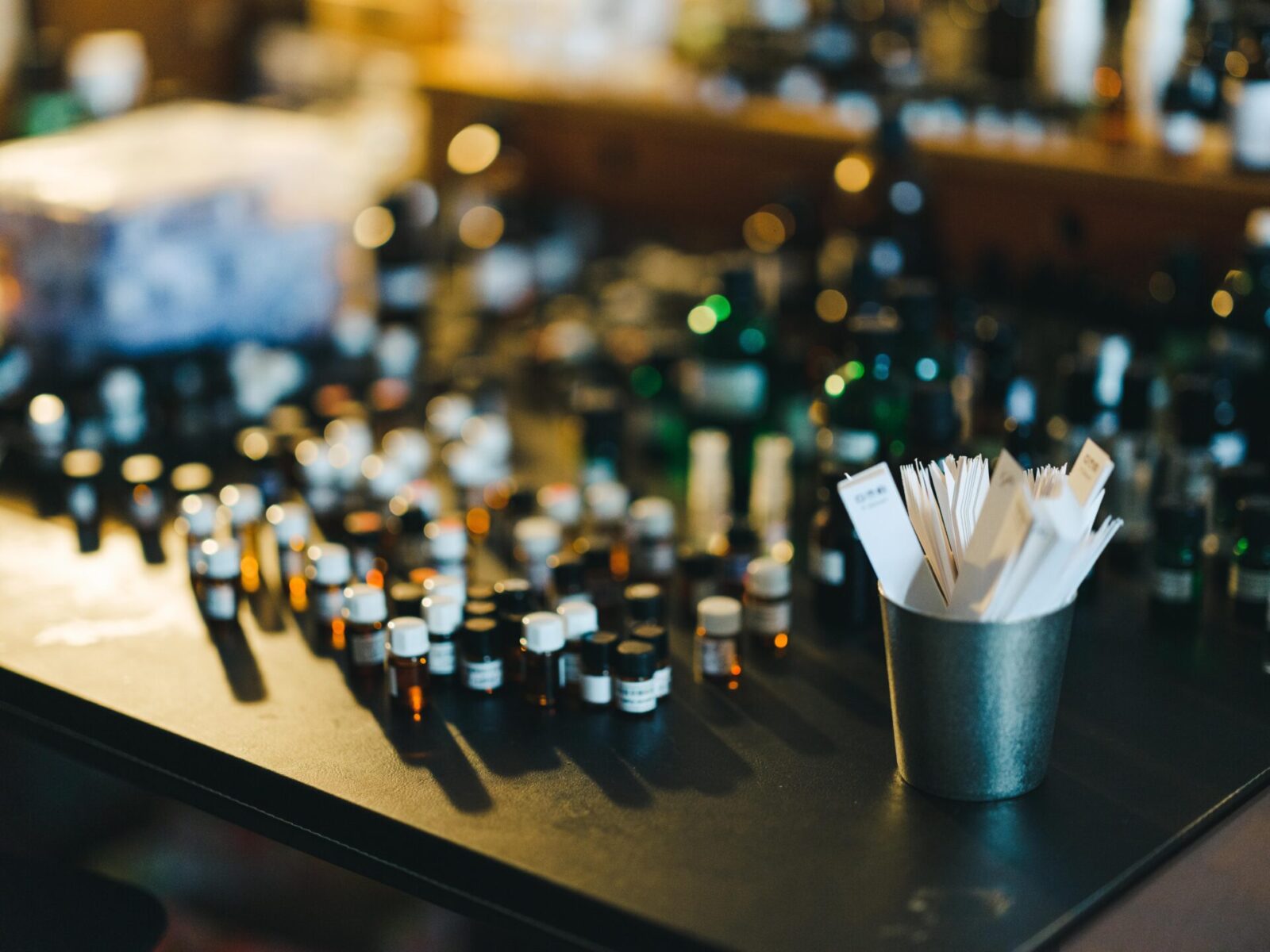
“For example, I once made a perfume for a whiskey brand. Peat is used to give whiskey its smoky aroma, so in order to recreate that smell I used cloves which is a medicinal herb.”
“In the fragrance that everyone identifies as the smell of roses, I believe there is a slight hint of honey. So in order to create a rose fragrance, I use the sweet scent from honey.”
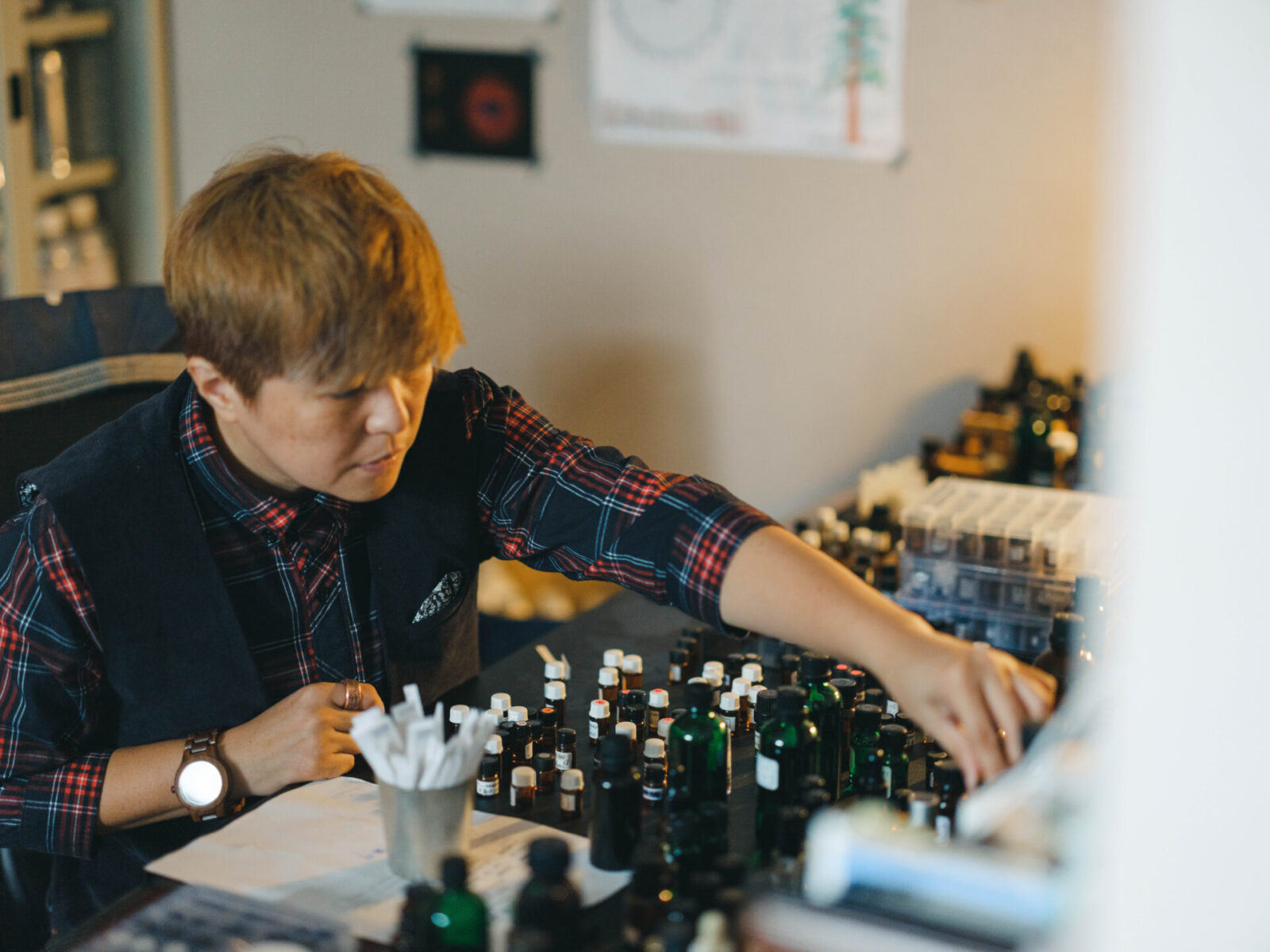
In order to do the job of a perfumer, Pan says, “Sensitivity and the ability to think associatively are essential skills for the job. You also need the knowledge and experience of how to accurately use the raw materials.”
Pan says that when she designs a fragrance, she often draws a picture first in order to materialize her images.
“Before I became a perfumer, I wanted to be a screenwriter and film director. I even went to school in order to get certified as a screenwriter. In my training at school, we would sit in cafés to observe people and write about them. My teacher told me that I was good at storyboarding so he recommended that I get certified as a film director, which I did. At the time, it was a difficult field for women to work in so I gave up that career, but I still dream of making a movie someday.”
“Designing fragrances is similar in that one must observe and think associatively with the subject matter. Painting, writing and photography are all things I still love and practice on a regular basis.”
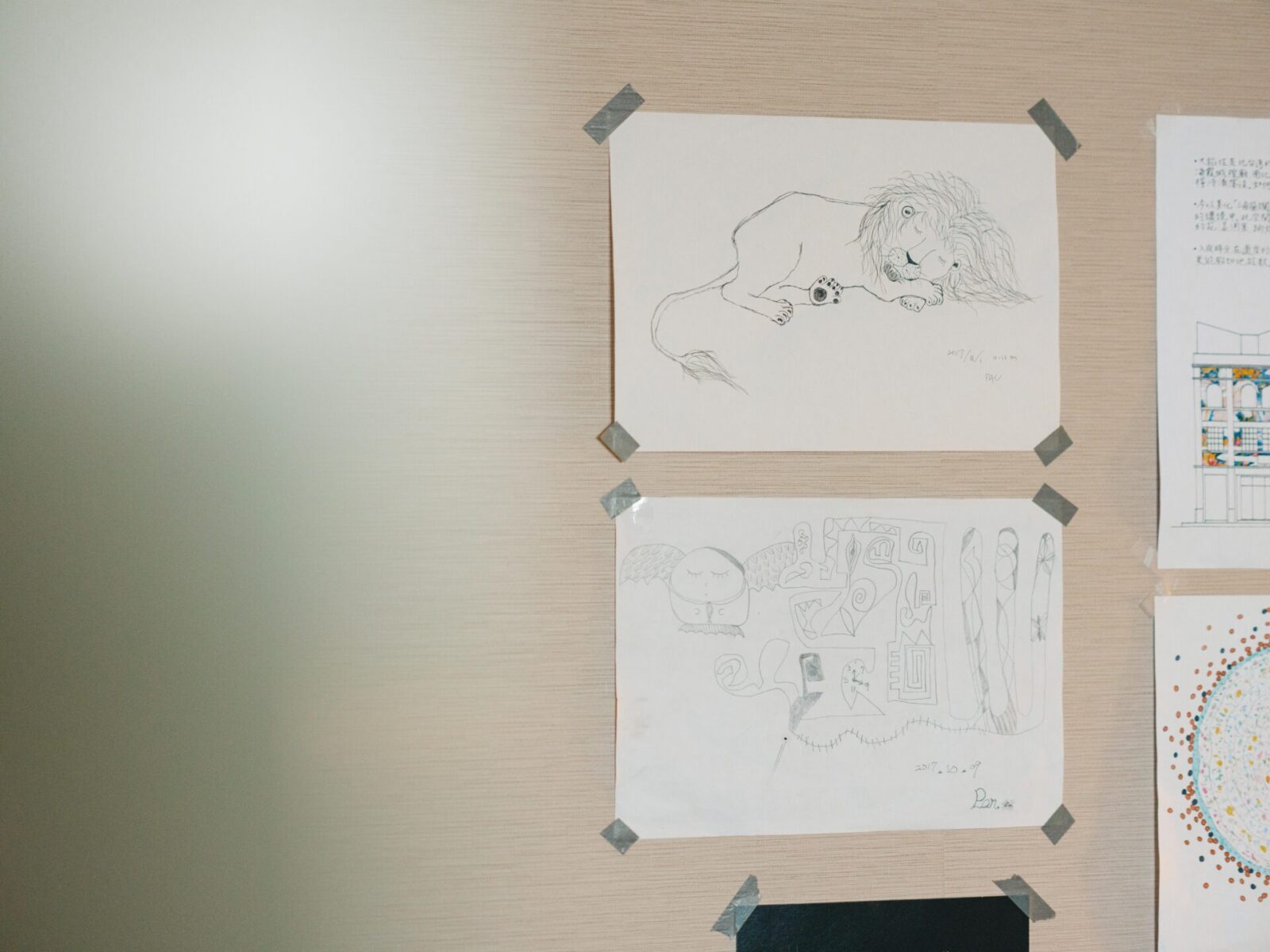
Spending time in nature is also important for Pan as it allows her to sharpen her senses.
“It is very easy to go out in nature around Taipei, so I often go hiking in the woods, or go to the beach. I also often go to my hometown Hualien. I keep a record of the scents I experience in these places in my diary and through photos.”
From land to brands, the philosophy behind designing various fragrances
The reputation of Pan’s skillmanship in accurately expressing even intangible concepts such as land and brand through perfume has spread rapidly, and she receives endless requests to produce perfumes from various brands.
Lately, she was asked to create a perfume with the fragrance of Taiwanese hot pot from a famous hot pot restaurant.
When designing perfumes for clients, Pan usually presents three different prototypes. Very occasionally, a client will ask for revisions but she says that even if she makes revisions according to the client’s request, the client usually ends up liking the first options she offered better.
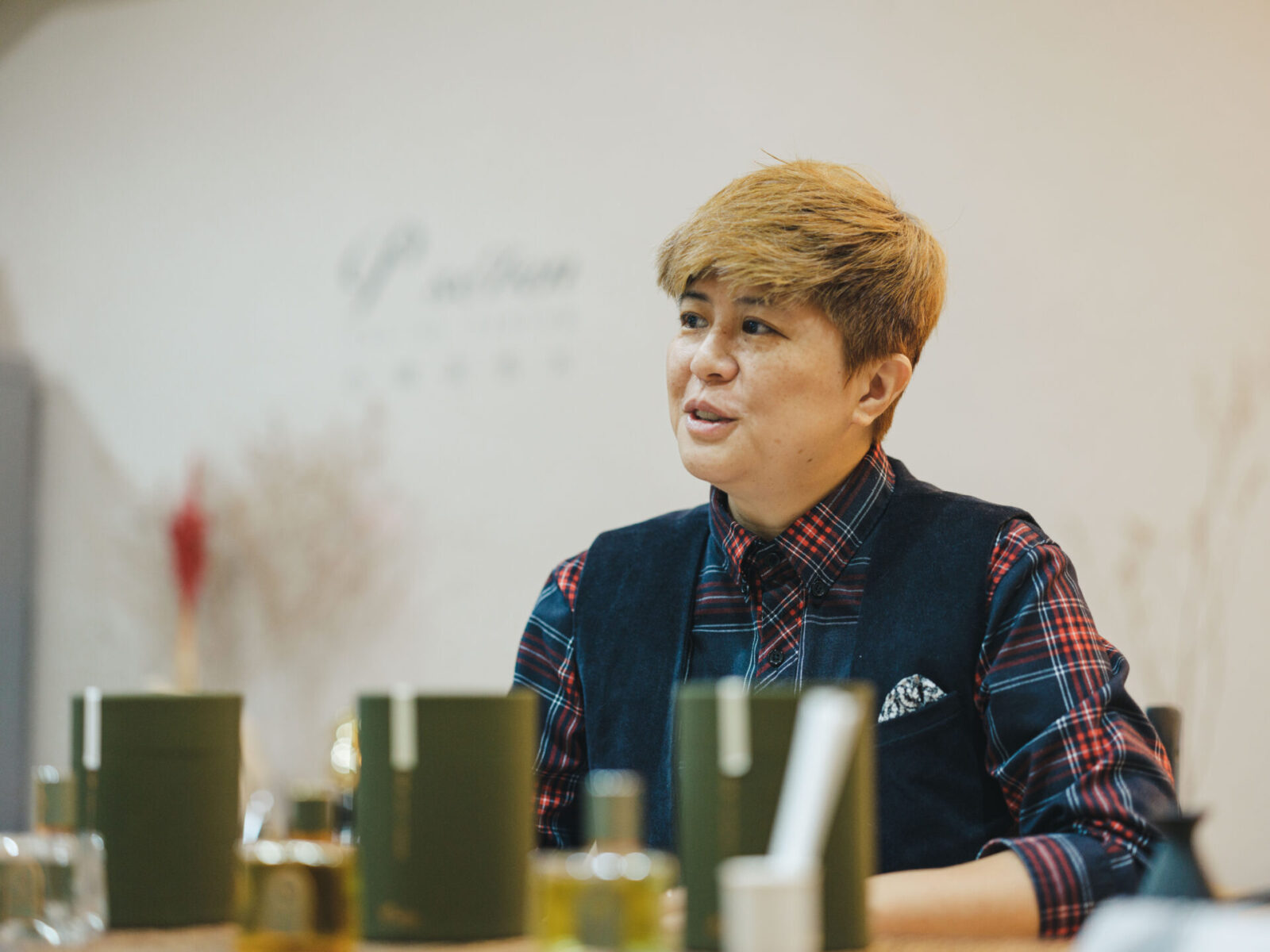
Pan has designed fragrances for a wide range of subjects, from municipalities, airports to hot pots. Since the way individuals interpret these different subjects are vastly different, how is it that she is able to make such precise fragrance designs?
“I think it has to do with the fact that I put in a lot of time preparing before I design a fragrance. The three prototypes I prepare for my clients are designed to include the brand’s philosophy in the fragrance, my personal image of the client, and what I believe to be the consumer’s perspective.”
“I spend time listening to the brand founders and their employees to understand the brand and its culture better, and in order to get the consumer’s perspective, I spend time imagining various things.”
What kinds of things does she imagine?
“For example, if the project was for an airport, I imagine what emotions people may have before embarking on their journey. Then I think about how to express those feelings. Some people may be excited about getting on a plane, while others may be nervous about it. So what kind of atmosphere should an airport have? These are the things I think about.”
Nonetheless, there are rare occasions where the client asks for modifications based on their own personal preferences. Whether the request is to add a certain ingredient or other personal preference, Pan does not disregard their requests.
“The brand belongs to the owner. I myself run the P.Seven brand, so I can relate. When I am designing a fragrance for a client, I do not include the tastes of the P.Seven brand.
“When someone who has grown up in a different time and place as myself smells a fragrance that I designed and it makes them imagine or feel the same emotions or thoughts that I associated with it, it pleases me very much and I feel like I have done a good job.”
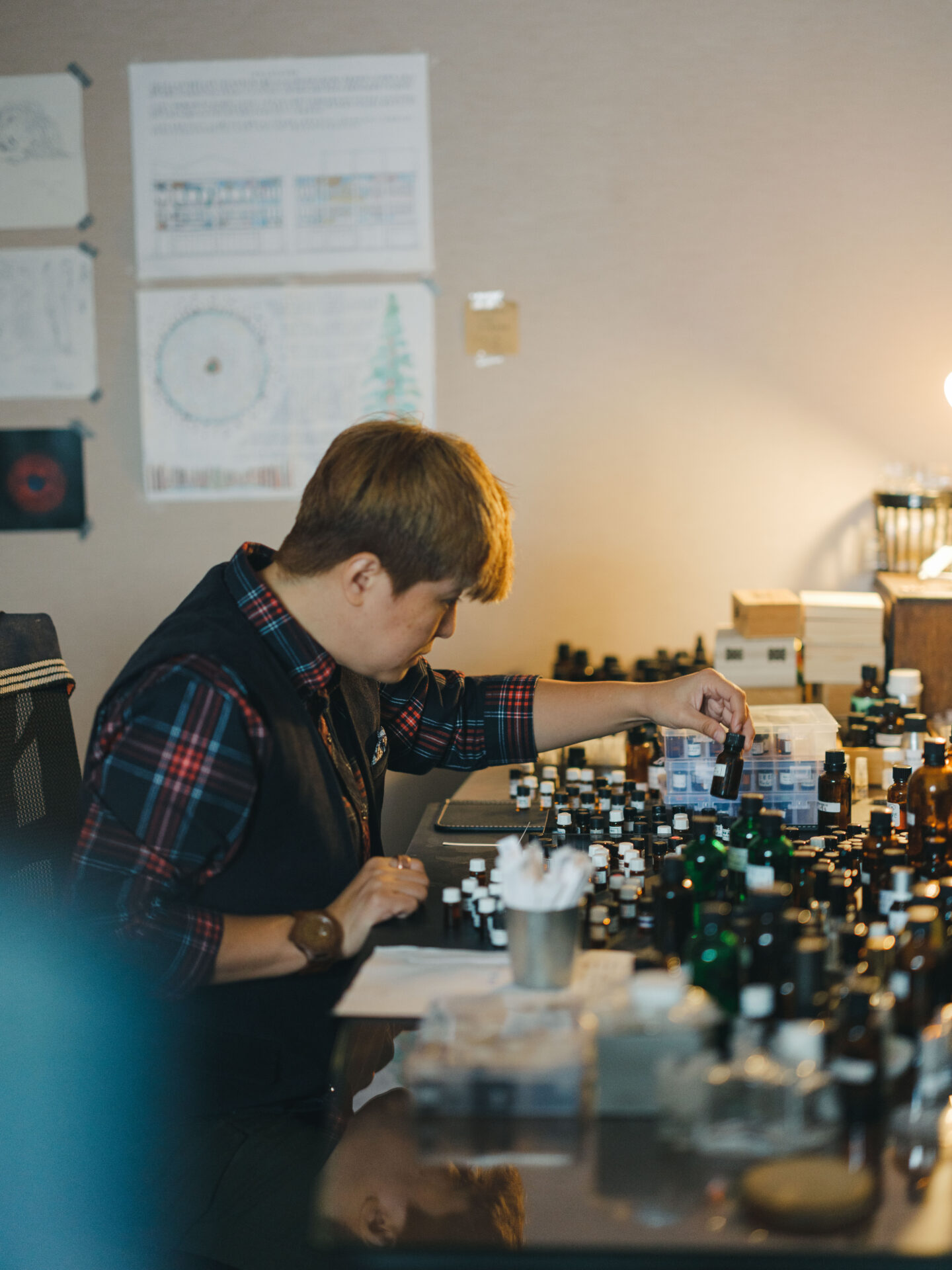
Taiwanese tea perfume for moments of self-reflection
Although the Feng Cha series has been released and sales have begun in Japan, there has been a storage of supply for some time. In order to meet demand, the perfume (excluding packaging) is now ready to be manufactured in Japan.
“If people can experience the feeling of brewing and drinking Taiwanese tea in their everyday life through this perfume, it would make me very happy.” Right after this interview concluded, Pan was scheduled to leave for Japan on a business trip.
Pan is very proud of this new series of perfumes, which expresses the appeal of Tawainese tea through its fragrance. We are sure that it will provide individuals in Japan with moments of self-reflection as they enjoy its unique fragrance.
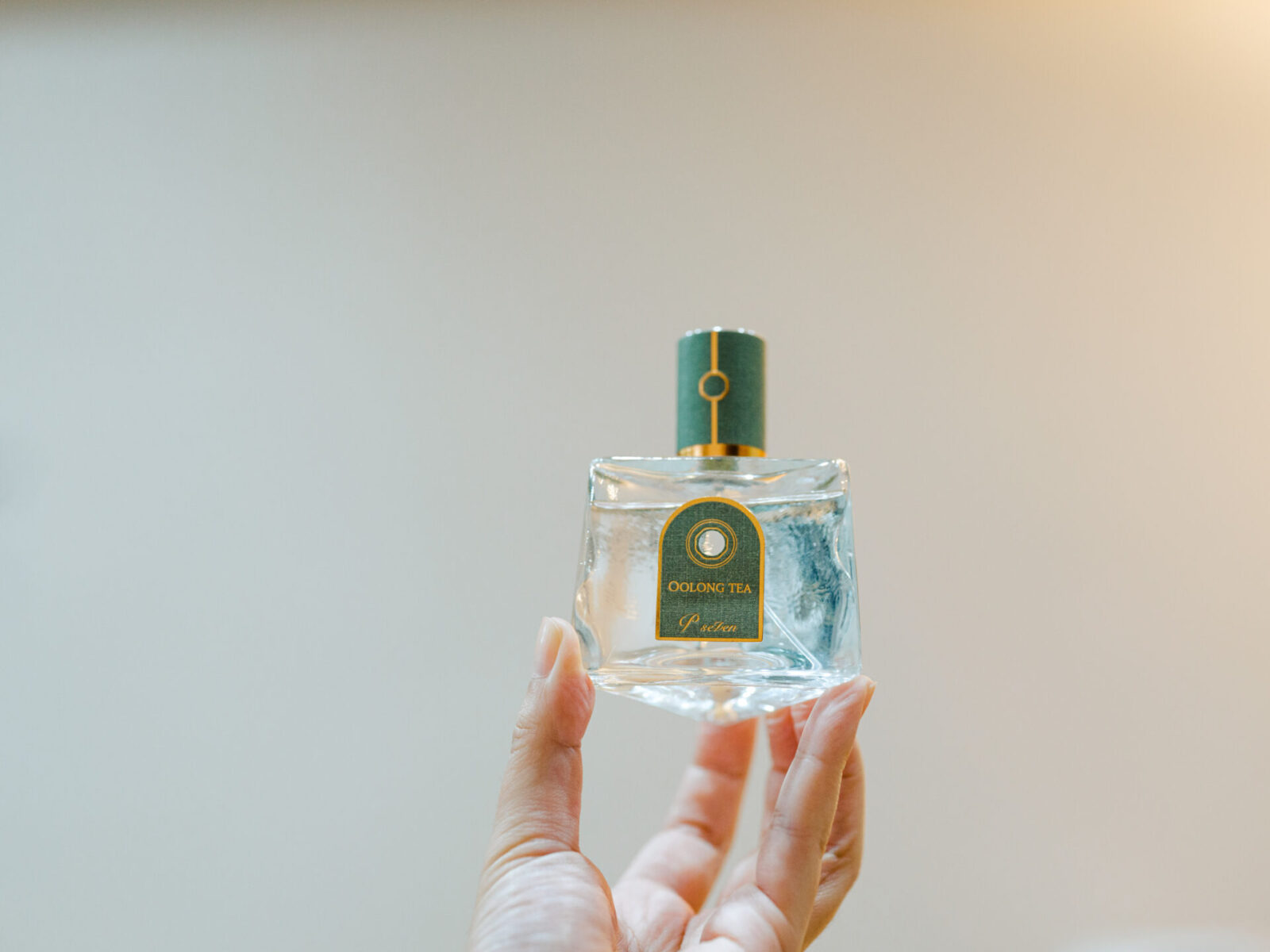
P.Seven Official Website (Japanese)

》The three fragrances of the Feng Cha series
Oolong Tea : A part of the soul, told in a single story
Oolong tea has a freshness and purity that is similar to green tea. The supple and slightly fragrant floral aroma of jasmine tea envelops the air, uplifting you with its fresh fragrance. The lingering scent remains in your throat and deep in your nose, bringing a feeling of joy that is like a feeling of wandering away from civilization and discovering a secret garden deep in the mountains. It is like having a blank page in your story, and when your soul reflects onto it, the way you see the world changes and you can’t help but smile.
Base note: oriental tea
Top note: fresh green
Middle note: frozen oolong tea, Botanical flower
Last note: herbal woody
Fragrance: oolong, jasmine, geranium, cupressus cashmeriana
Aged Tea : The quiet and rich appeal of concentrated Taiwanese aged tea
Its powerful impact awakens even the flowers and plants in the quiet passing of time. The tea’s fragrance is noble and elegant and the reminiscent fragrance hides the vivid voices of the season and earth.
The quiet, rich, smoky and sweet aroma of the oolong and plum fruit lingers and encompasses the wood’s original fragrance and ancient wisdom. It will make you feel that those long months and years of waiting were not in vain.
Base note: Taiwan lao cha
Top note: refreshing herbs, green tea, oolong tea, green grass
Middle note: oriental tea, black tea, prunus mume (smoked plum fruit)
Last note: smoky wood, camphor tree, Tawainese cedar tree
Fragrance: oolong tea, black tea, green tea, prunus mume
Formosa Beau-Tea : The light pop of sparkling champagne with the softness of wool
The supple and lustrous aroma of dongfang meiren tea is combined with the scent of a delicate fruity champagne, which settles into a gentle cashmere wool like musky aroma.
The supple and lustrous fruity champagne lightly pops inside a glass with a sparkling sensation reminiscent of jazz. The transition from a fresh green to a golden ripe fruit is like the transition from an innocent girl to an elegant woman. From there, the soft and sophisticated aroma of tea arises. It is the scent of tea that was created because it was once destroyed, and hence captured the fascination of people. The musk scent at the base becomes clearer over time, just like the changes that occur from a girl growing into a woman. The captivating scent is like a cashmere wool, gently nestling us into the night.
Base note: dongfang meiren tea
Top note: refreshing fruity champagne
Middle note: dongfang meiren tea
Last note: velvet muskFragrance: oolong tea, green tea, ho leaf essential oil, honey
Photo: Jimmy Yang
Translation: Sophia Swanson
Editor and writer for non-fiction. Born in Fukuoka in 1980 and raised in Ibaraki. Currently living in Taiwan. After working as an editor for magazines and web media at a publishing company in Tokyo, she moved to Taiwan in February 2011 with her partner. She worked for a local digital marketing company and supported Japanese companies entering Taiwan for six years. After having a child and going through a divorce, she raised her child as a single mother for six years before remarrying a Taiwanese. She became an independent editor in 2019 and established So Getsu To Editing, which creates Japanese and Chinese (Taiwanese Mandarin) content. She writes a series about Taiwan for magazines, “&Premium” and “Pen”. She also writes a blog “心跳台湾” (yaephone.com) about the latest information on life, travel, child raising and work in Taiwan.
Editor and creator of the future through words. Former associate editor of Huffington Post Japan. Became independent after working for a publishing company and overseas news media. Assists in communications for corporates and various projects. Born in Gifu, loves cats.
